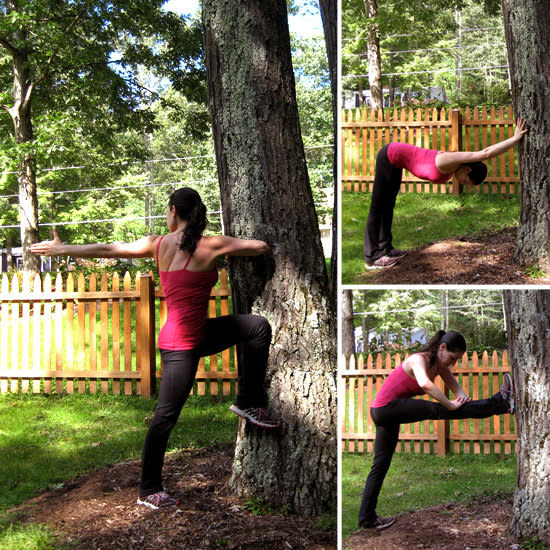How to Prevent Injuries when Hitting the Trail

Source: How to Prevent Injuries When Hitting the Trail
Taking a leisurely hike seems like a fun way to spend an afternoon, but if you're not careful, you could end up getting hurt. Follow these tips on your next hike to keep you safe and injury free.
Know the route: Being familiar with the trail will help you avoid obstacles like cliffs and deep rivers. If you're checking out a new place to hike, go with someone who's been on the trail, research beforehand, or bring a GPS. If you are familiar with the trail, it's still a good idea to go with someone who can offer help in case you fall or get hurt.
Gear up: Splurge on a solid pair of hiking boots with a rugged sole to prevent slipping, and if you have weak ankles, choose a pair that covers this area of your leg. Pack a walking stick to help support your weight on inclines and declines, and don't forget basic first-aid supplies either. Bring snacks, water, and a a cell phone, too. You may not get service, but if you do, a cell phone could save your life.
Start off on the right foot: A hike is a workout just like a run or bike ride, so to get your muscles ready, do a short warmup before you start trekking up a steep mountainside. If you're new to hiking, ease into it with shorter, flatter routes, and gradually ramp up as you build endurance and strength. Stop often to rest your muscles, catch your breath, and stay hydrated. You can also find a tree and do these stretches.
More from FitSugar: Take the Ache Out of Asana: Back Pain Relief in Yoga Class
Don't ignore pain: If you stepped funny and feel a twinge in your foot, or you think you strained a muscle, don't keep going. Ignoring an injury and continuing to walk on it tends to make it worse, so it's best to throw in the towel, turn around, and try again when you're healed up.
Stay alert and watch your step: One wrong step on a slippery rock or pile of gravel could have you hitting the ground hard. Be mindful of every step you take to ensure it's a safe one. Also avoid jarring movements like slamming your foot down; varying your steps such as walking in a zigzag or sideways can also help prevent muscle overuse and strain.
Stretch afterward: Hiking is a pretty strenuous sport, and there's no doubt you'll suffer from a little soreness afterward. Prevent the severity of your discomfort by doing these hip and lower back openers as well as these easy hamstring stretches to ease soreness and to increase flexibility for your next hike.
Related Content:
Easy Ways Runners Can Show Their Hamstrings Some Love
Do These 5 Things to Prevent Workout Injuries
6 Ways Working Out With Others Can Lead to Injury
Follow FitSugar on Twitter
Become a Fan of FitSugar on Facebook
